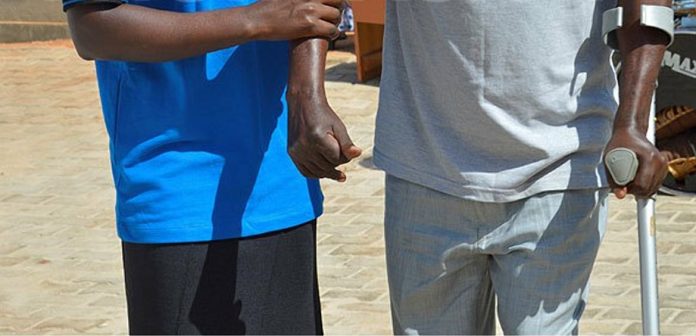Stroke is a leading cause of death. According to the World Health Expectancy ranking which is a global health and life expectancy database, stroke remains the leading cause of mortality in Kenya with a death rate of around 92 per 100,000 people. This disease accounts for over 6 percent of total deaths in Kenya. At the same time, the World Health Organization (WHO) 15 million people worldwide suffer a stroke every year. Of these, 5 million die and another 5 million are left permanently disabled. “Stroke is uncommon in people under 40 years; when it does occur, the main cause is high blood pressure. However, stroke also occurs in about 8 percent of children with sickle cell disease,” the WHO states.
Understanding stroke: What is it?
According to the Centre for Disease Control and Prevention (CDC), a stroke usually occurs when blood supply to part of the brain is blocked. It can also occur when a blood vessel in the brain bursts. When a stroke takes place, parts of the brain become damaged or are killed completely. This then results in death, lasting brain damage or a long-term disability.
“To work properly, your brain needs oxygen. Your arteries deliver oxygen-rich blood to all parts of your brain. If something happens to block the flow of blood, brain cells start to die within minutes, because they can’t get oxygen. This causes a stroke,” the CDC explains.
Causes and Types
There are two main types of stroke. According to the Johns Hopkins Medicine, these types are as follows:
a). Ischemic stroke: This is the most common type of stroke. It occurs when a major blood vessel in the brain is blocked. This blockage can be caused by a blood clot or a build-up of fatty deposits and cholesterol. This build-up is commonly known as plaque.
b). Hemorrhagic stroke: This type of stroke occurs when a blood vessel in the brain bursts or ruptures and spills blood into the nearby tissues. This then results in pressure building up in the nearby tissues causing more damage and irritation.
Are you at risk of heart failure? See Types, Causes, Symptoms, Treatment
Risks
The World Health Organization lists high blood pressure and tobacco as the most significant modifiable risks. The WHO states that for every 10 people who die of stroke, four could have been saved if their blood pressure had been regulated. “Among those aged under 65, two-fifths of deaths from stroke are linked to smoking. Atrial fibrillation, heart failure and heart attack are other important risk factors,” states the WHO. These risk factors are further broken down as follows by the Johns Hopkins Medicine:
Blood pressure of 140/90 or higher, High red blood cell count which thickens blood and makes clots more likely to occur, Damaged heart valves (valvular heart disease) can cause long-term (chronic) heart damage, IV (intravenous) drug abuse, Excessive alcohol use (More than 2 drinks per day), Gender (more men than women likely to come down with stroke), and Race (Black people at higher risk than white people).
Symptoms
Always understand that a stroke is a medical emergency. Every minute counts. Symptoms may vary from one person to another, and stroke may occur very suddenly. The main symptoms to look out for include:
- Sudden weakness or numbness of the face, arm, or leg, especially on one side of the body
- Sudden confusion, having trouble speaking or understanding speech
- Sudden problems with vision, such as dimness or loss of vision in one or both eyes
- Sudden trouble with walking, for example, sudden dizziness or problems with balance or coordination
- Fainting (loss of consciousness) or seizure
- Severe headaches with no known cause, especially if they happen suddenly
According to the Centre for Disease Control, you should use the FAST method if you suspect that someone is about to have a stroke. The CDC states that stroke treatments work best if the stroke is recognized and diagnosed within 3 hours of the first symptoms. This means that you should act fast once symptoms begin to appear. The FAST method you should use involves the following:
- F—Face drooping: Ask the person to smile. Does one side of the face droop?
- A—Arms weakness: Ask the person to raise both arms. Does one arm drift downward?
- S—Speech difficulty: Ask the person to repeat a simple phrase. Is the speech slurred or strange?
- T—Time to call medical assistance: If you see any of these signs, call 9-1-1 or your nearest medical hotline right away
Treatment
Treatment usually depends on the type of the disease the patient has come down with.
a). Ischemic stroke: According to the CDC, a patient who gets to the “hospital within 3 hours of the first symptoms of an ischemic stroke, can get medicine known as thrombolytic which breaks up blood clots. Tissue plasminogen activator (tPA) is a thrombolytic.”
b). Hemorrhagic stroke: This type can require other medications, treatment procedures such as endovascular procedures, and surgery. For example, Johns Hopkins Medicine says that special types of IV (intravenous) fluids are often used to help reduce or control brain swelling in cases of hemorrhagic stroke.
After treatment
According to the CDC, a patient who has had a stroke will be at an increased risk of suffering another episode. “1 in 4 stroke survivors has another stroke within 5 years, while the risk of stroke within 90 days of a transient ischemic attack (TIA) may be as high as 17 percent, with the greatest risk during the first week,” the CDC explains.








